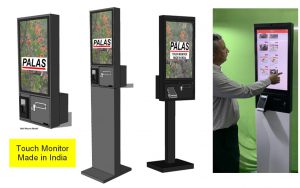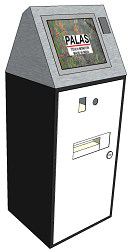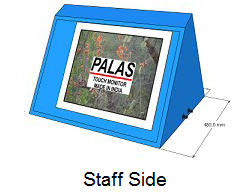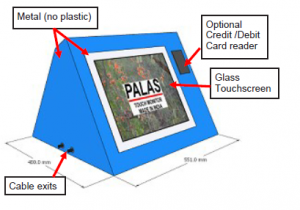Palas Self Ordering Kiosks (https://palas-india.com/psos.html)
IS THE INDIAN CUSTOMER READY FOR SELF-SERVICE KIOSKS IN RESTAURANTS?
Touchscreen Systems & Kiosks have been around for a long time in food outlets in India. 20 years ago, TGI Fridays in Delhi was amongst the first adopters, using Palas Touch Monitors based on MicroTouch curved touchscreens in CRT monitors, with a DOS based POS software!
More recently, Taco Bell experimented with an IBM self-serve kiosk at an outlet in Bangalore. A food court in Saket, Delhi, uses touchscreen systems fixed at customer tables, for both ordering and payment by cards. Others use iPads and tabs as menus, handed to customers for browsing.
So far the technology has not caught on much. Some of the early innovators failed mainly because of poor software implementation, the user interface was too complex, often replicated from the cashiers POS terminal. An iPad menu of a 5 star restaurant near the Delhi airport was so poorly designed that users often exited the menu, with no way of going back without asking for the waiter’s help. Some failed for a very simple reason – in an Bangalore restaurant, the kiosk was badly located, and went unnoticed!
Now once again interest in self order kiosks has revived, with companies like McDonalds investing in kiosks with plans of having them in over 10,000 stores in the US
The benefits of kiosks are many:
- Customers can browse the menu on the kiosk at their own pace, in an intuitive, easy-to-use, non-intimidating manner. On the other hand, order takers, (often cashiers) in self-service fast-food outlets get impatient if the queue is long, and tend to hurry the customer along, often leading to truncated orders
- Reduce queues. Kiosks cannot totally replace cashiers, but, to meet more demand, kiosks are ideal as queue busters. Plus, adding kiosks is cheaper, in the long run, than adding cashiers
- In India, where many customers still prefer cash, they can place the order at the kiosk, then go with the receipt and pay at the cashier. This “auto-manual” system not only reduces “menu browsing” at the cashier, sharply increasing the number of customers handled per cashier, but also removes the need to have expensive cash handling machines in the kiosk
- Upselling is easier with kiosks. Cashiers are (and should be) too busy to upsell. An exception is the Delhi Airport Duty Free shop, where the cashier keeps pushing add-ons, causing billing to take very long, irritating customers in the queue. Customers also get irritated if a sales person is pushing an add-on item, but accept it if a kiosk is offering “would you like fries also”
- Large, high resolution, tempting pictures of the product, visible at the time of ordering, increases chances of more orders
We think the Indian customer is ready, and that leading Indian fast food outlets will soon start rolling these out.
Rajiv Srivastava

 AVOIDS CROWDING – SELF-SERVICE REGISTRATION OF PATIENTS
AVOIDS CROWDING – SELF-SERVICE REGISTRATION OF PATIENTS hard-to-reach surfaces, can be splashed with alcohol or water, or swabbed with alcohol wipes
hard-to-reach surfaces, can be splashed with alcohol or water, or swabbed with alcohol wipes